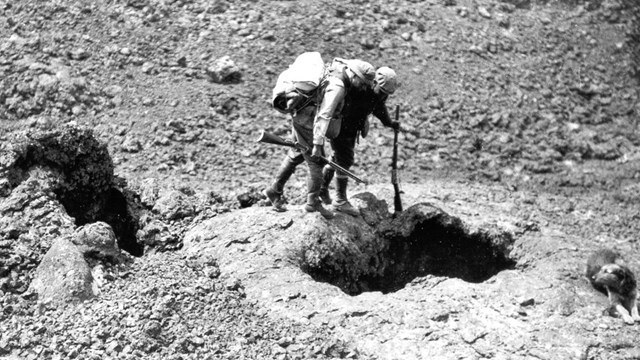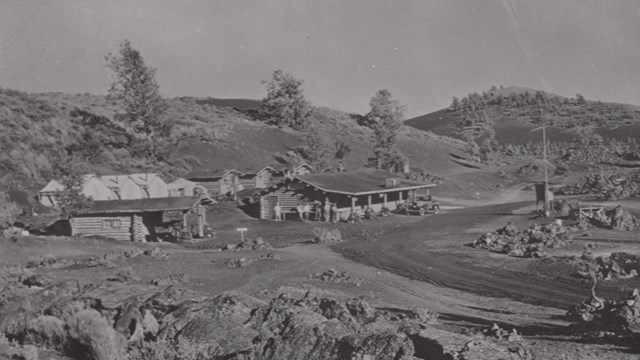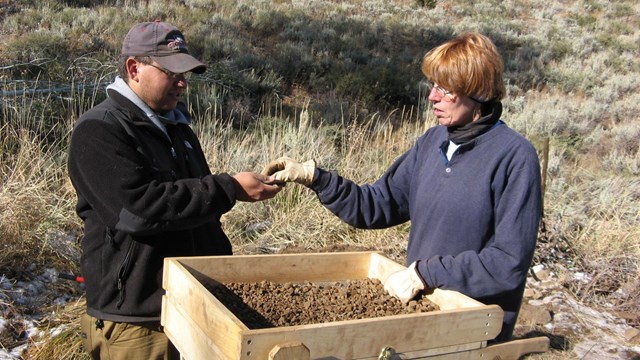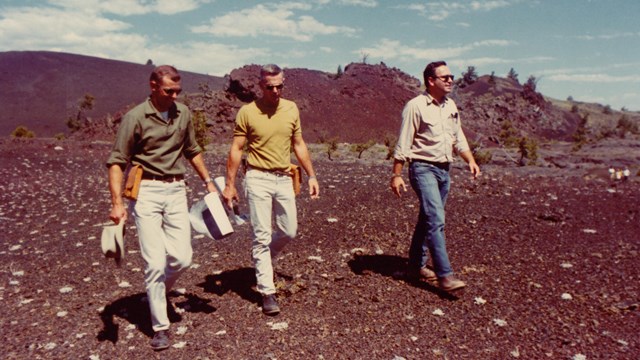|
First established as a national monument in 1924, Craters of the Moon has a rich history, both geologically and culturally, spanning much further beyond its time as federally managed and protected land. 
People
The area has attracted the reverence, passion, interest, and disdain of many groups of people over time. 
Places
Although the oldest buildings were built in the 1930s, most of the park's infrastructure was built in the 1950s and 60s. 
Collections
Learn about the park's natural and cultural history collections and how they are maintained. 
Timeline of Events
Explore a timeline of major events in the history of Craters of the Moon. Historic Context StatementsHistory of Craters of the Moon and the Snake River Plain of Southern Idaho Administrative HistoryHistory of Craters of the Moon National Monument and Preserve |
Last updated: January 22, 2024
